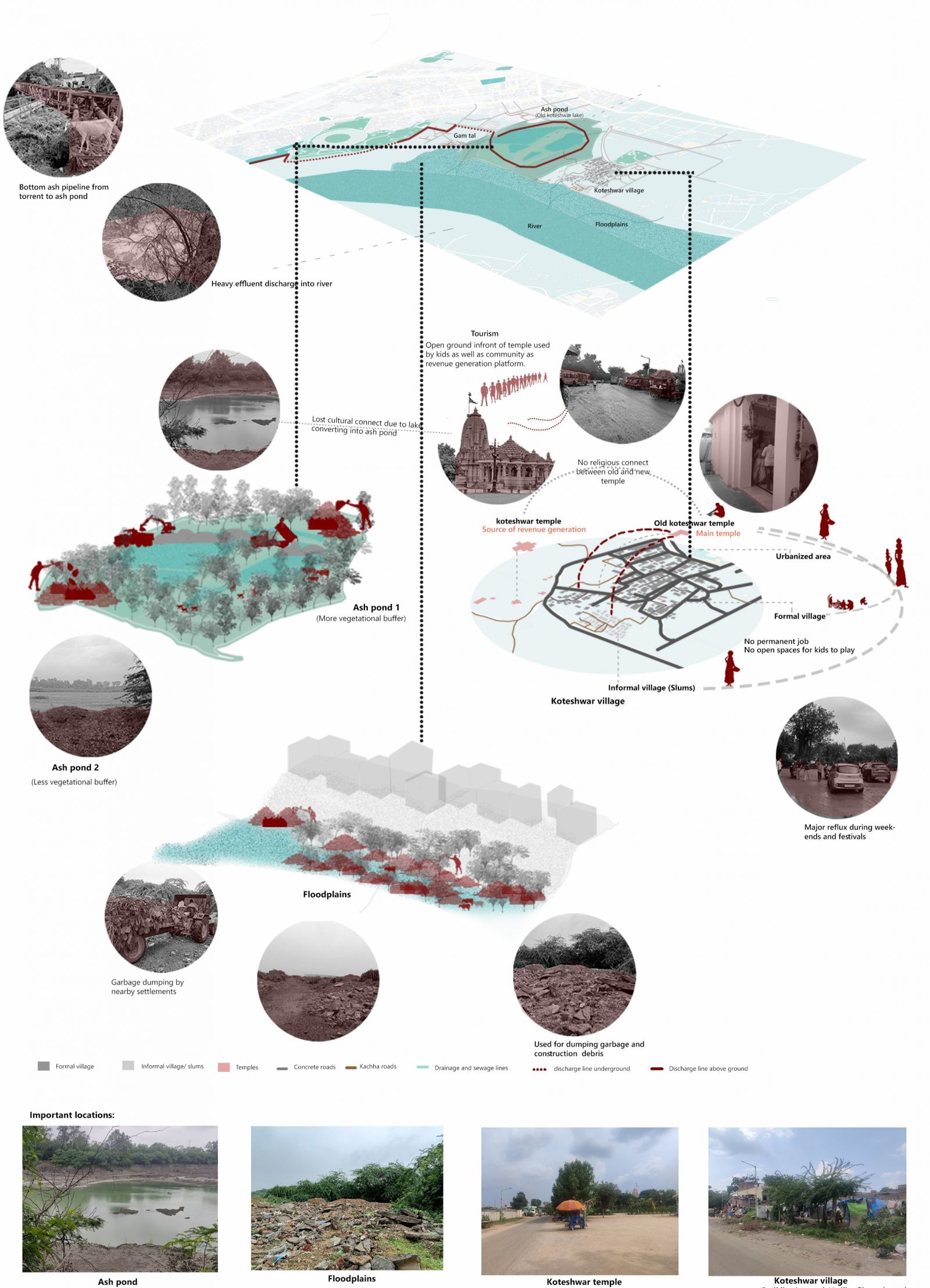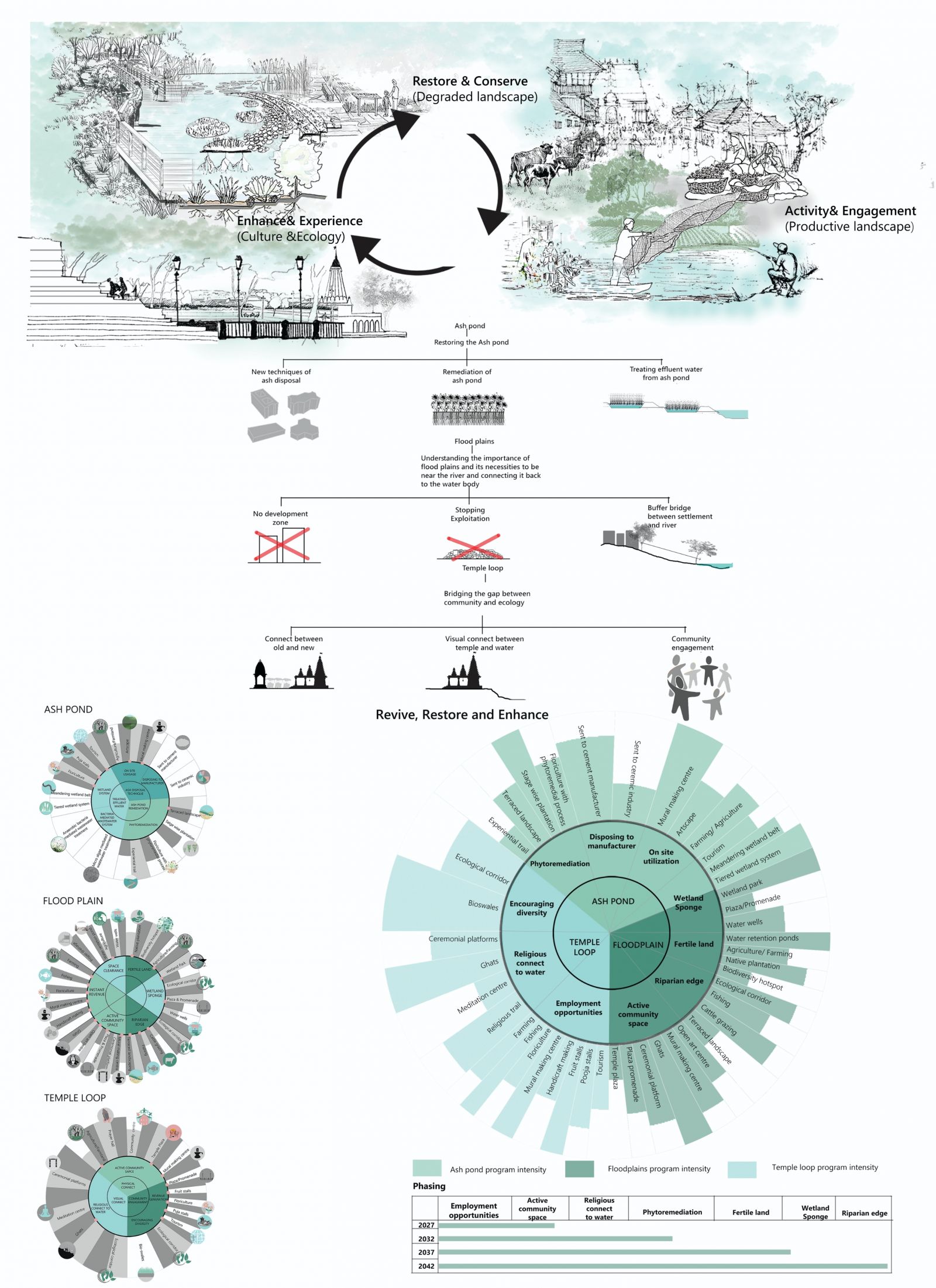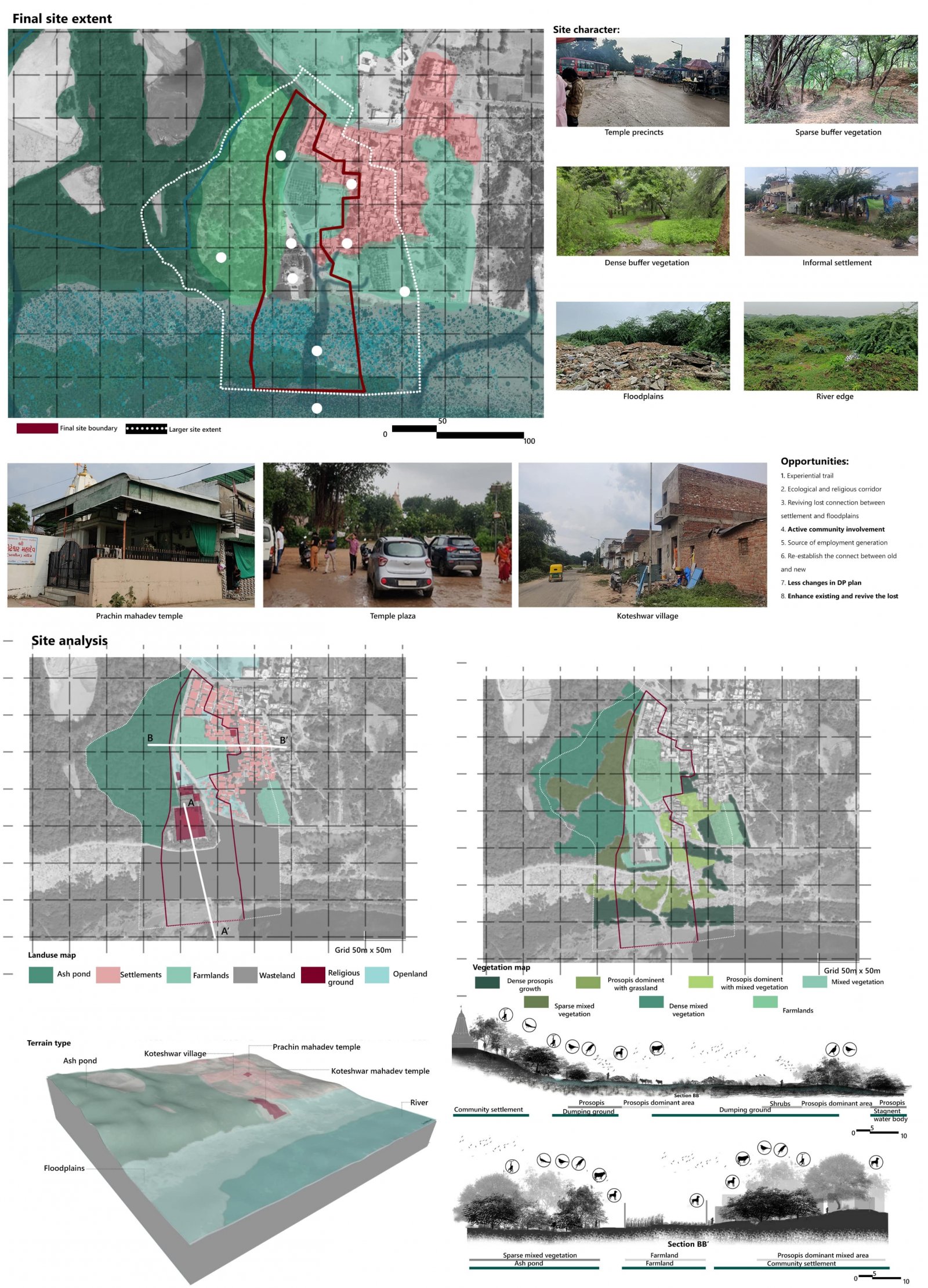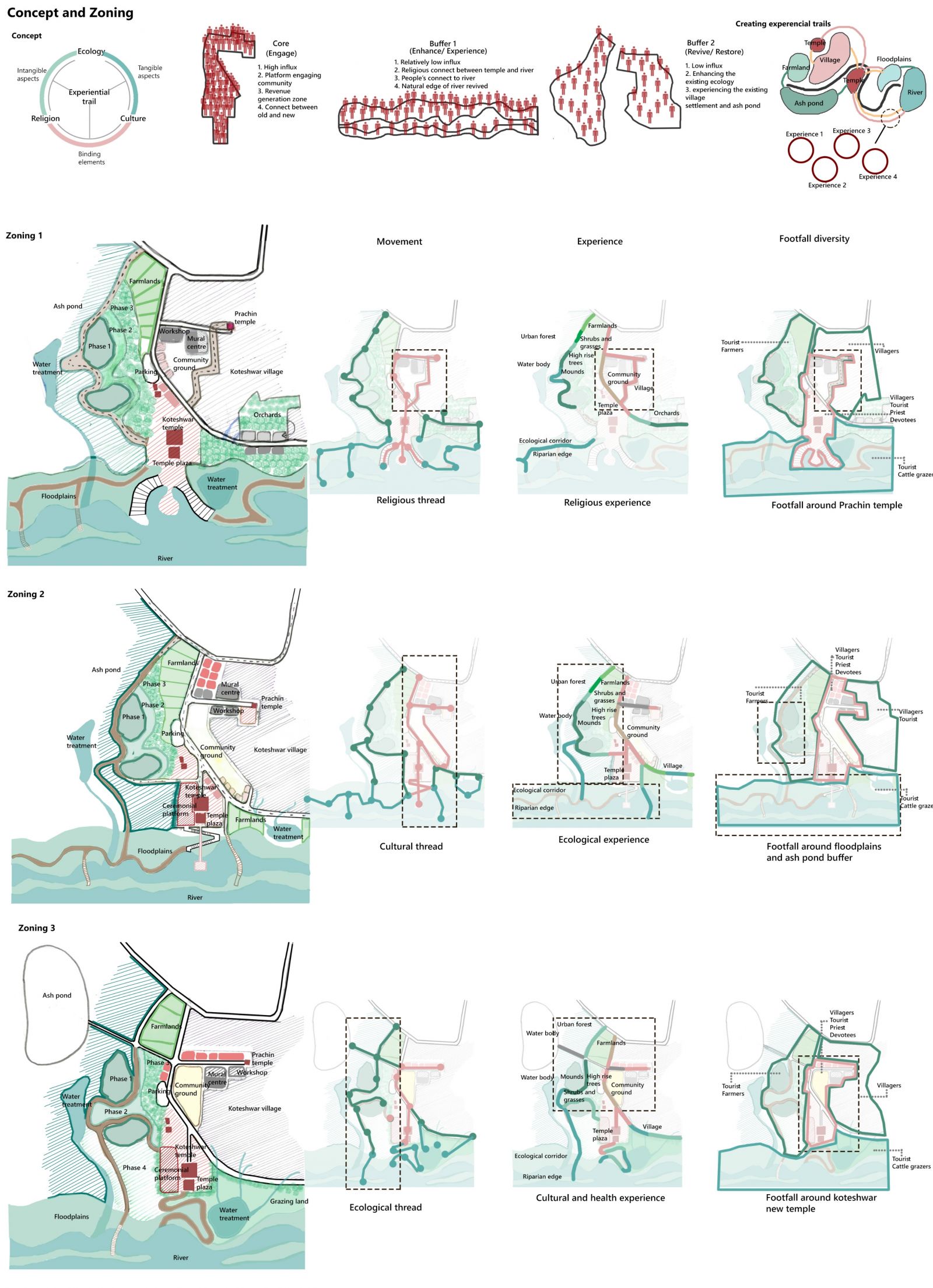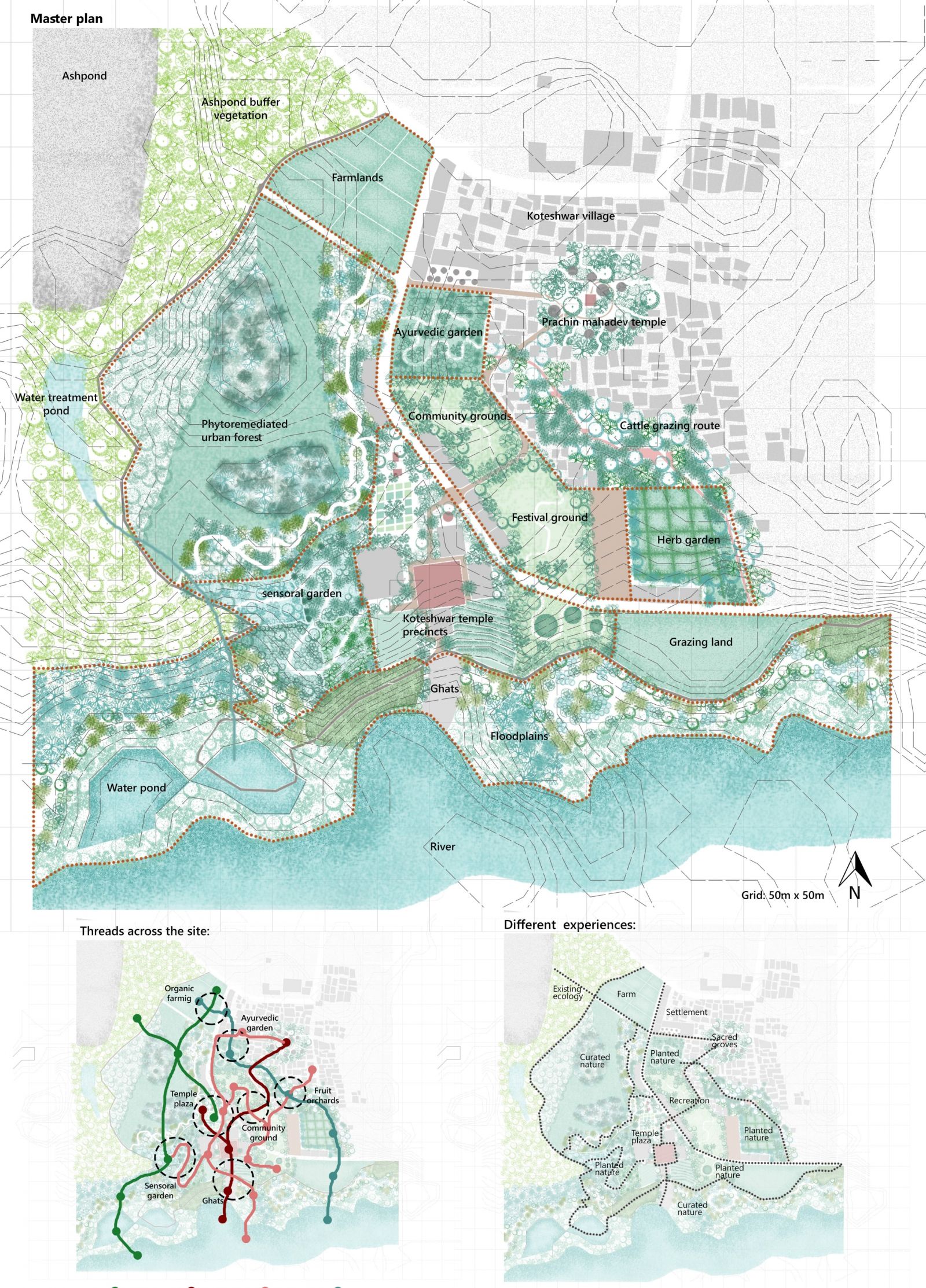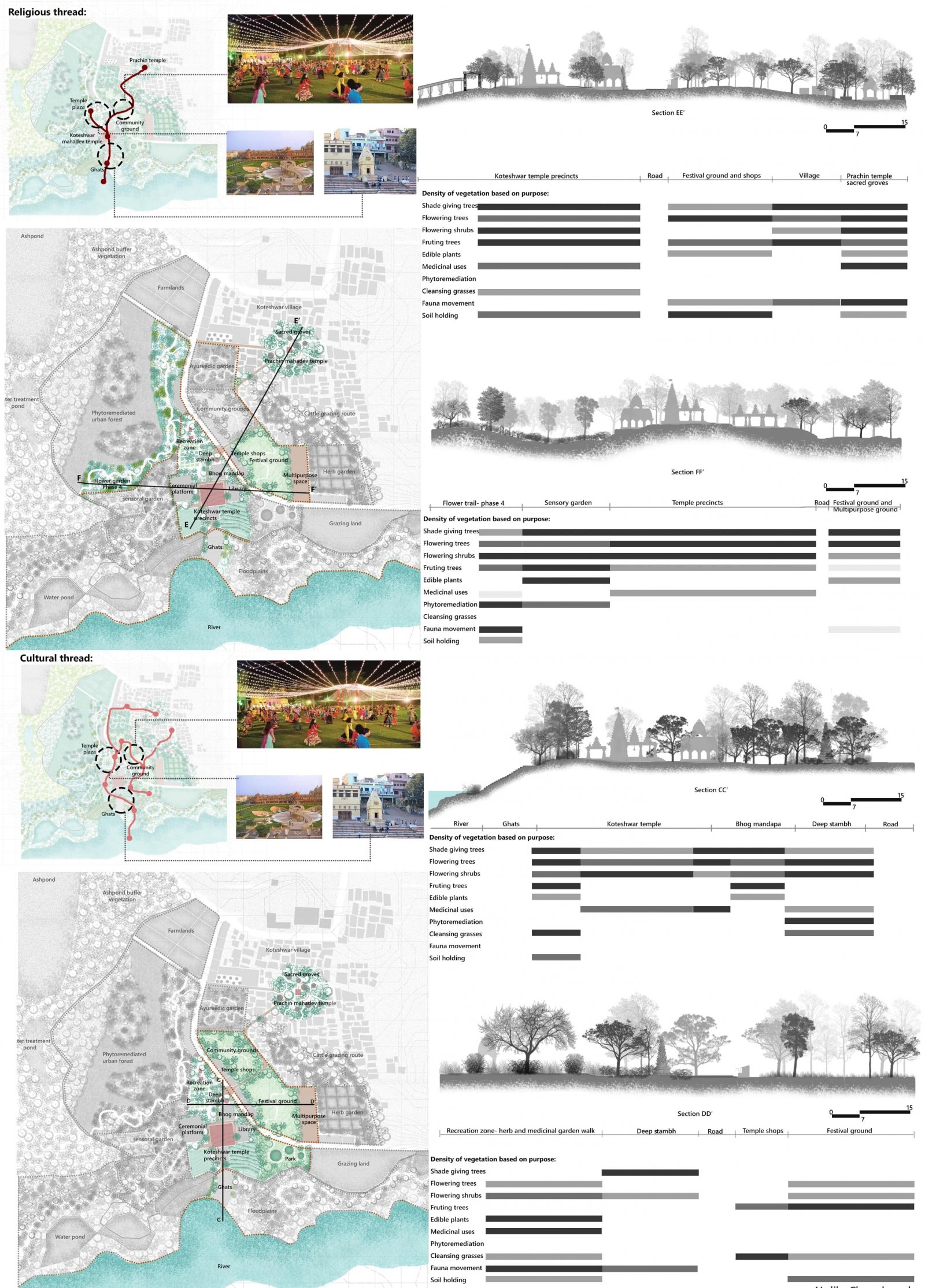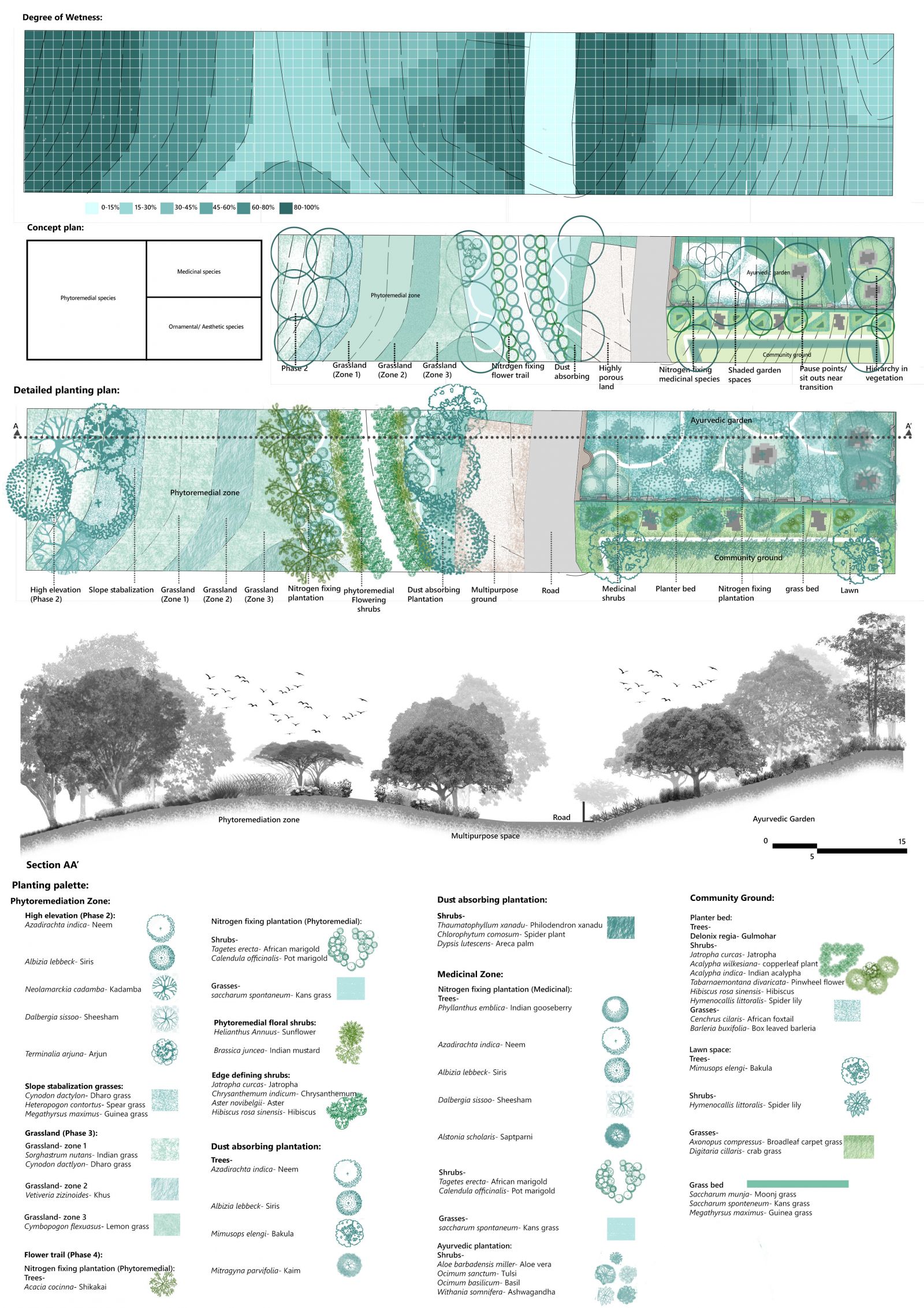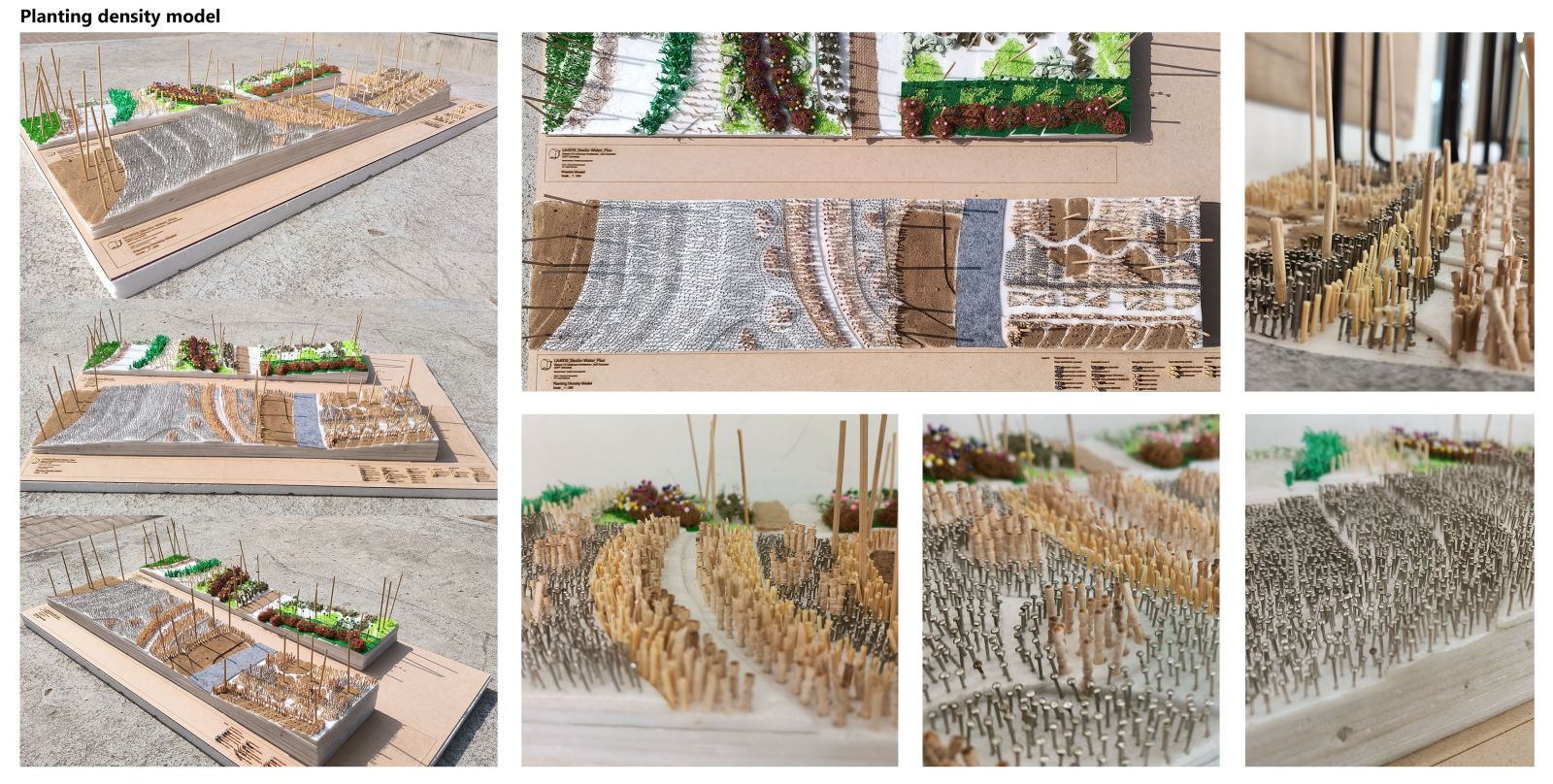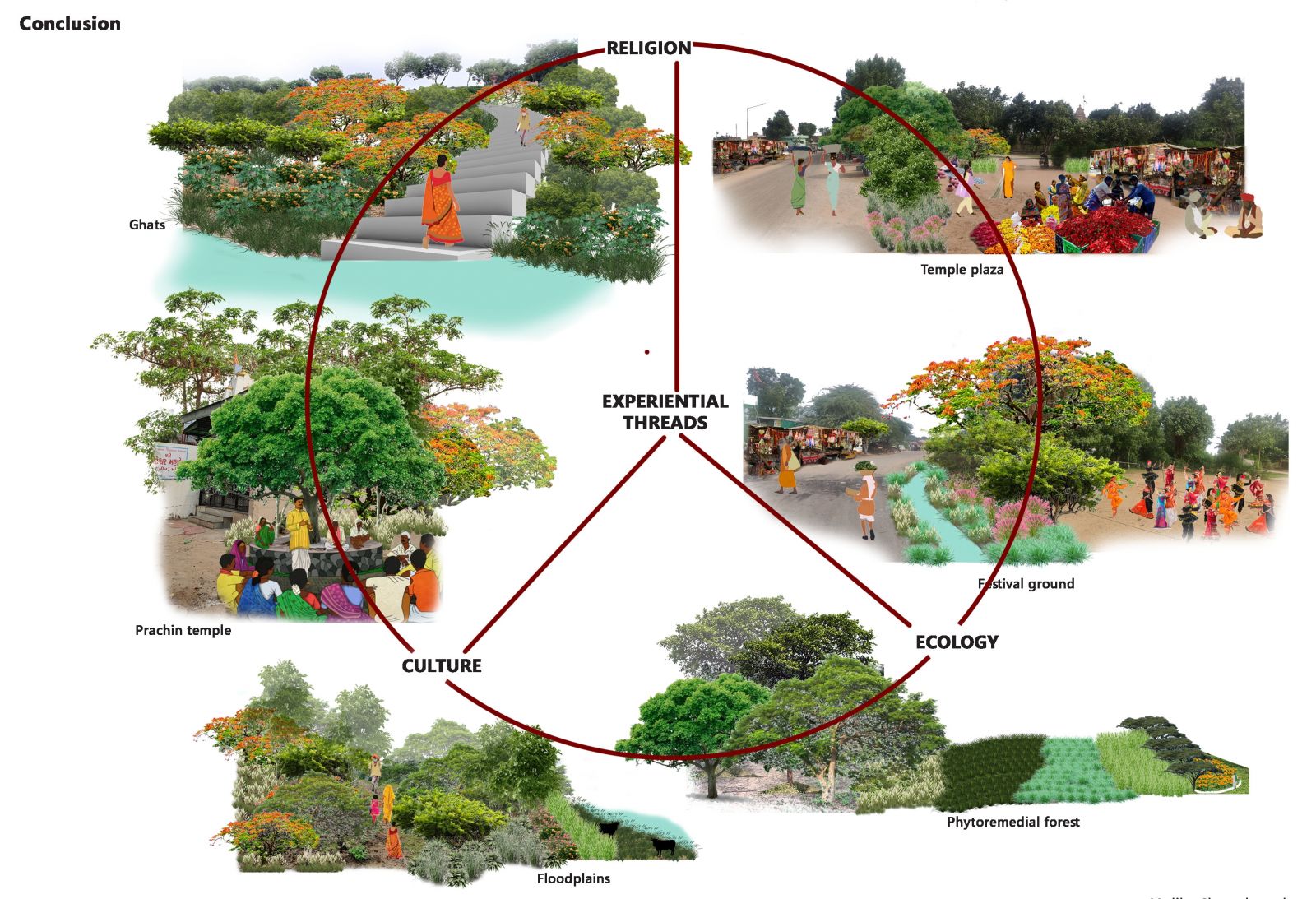Your browser is out-of-date!
For a richer surfing experience on our website, please update your browser. Update my browser now!
For a richer surfing experience on our website, please update your browser. Update my browser now!
Ignorance of water bodies in urban areas turns them into an eyesore. This has led to the conversion of Koteshwar lake into an Ash pond, whereas the changing perception of locals has resulted in surrounding ecological spaces getting converted into dumping ground and garbage yards. With increased religious tourism in the new Koteshwar temple, the connection between this new and the prachin temple is lost. This new temple has turned into a commercial and recreational space, often barring the locals. While the old temple is getting more secluded, it is getting disconnected from surroundings, and forgotten. The project aims at stitching the threads of culture and religion along with restoring the ecological connect of the site that will give a distinct identity to the Koteshwar village and its community, which otherwise would be lost with the projected development plan. Through this design one can understand that the cultural, religious, ecological and health aspects are present in bits and pieces all across the site. By reviving the lost and enhancing the existing, these aspects can be connected in the form of the experiential threads.
View Additional Work